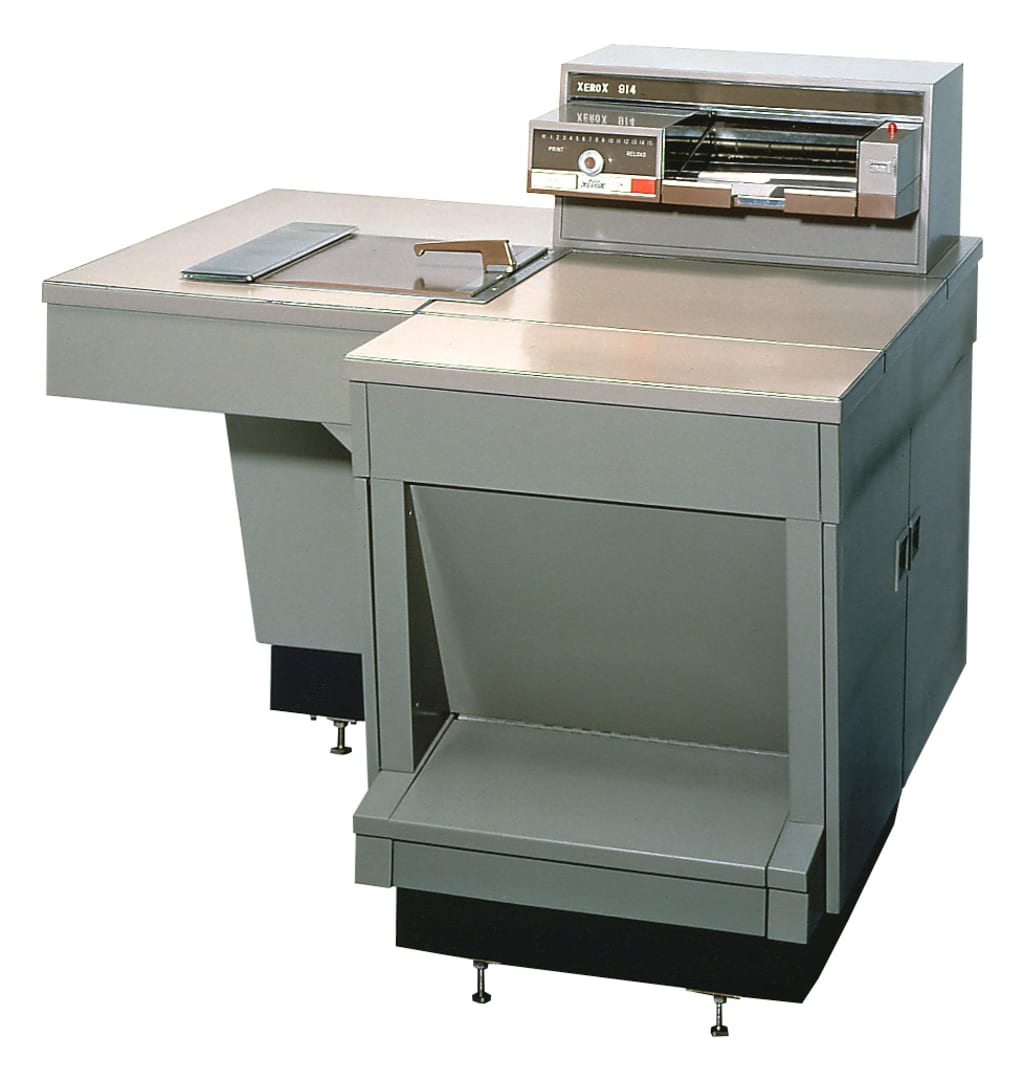"The Groundbreaking Impact of the First Xerox Machine
"Revolutionizing the Copying and Printing Industry with Xerography Technology"

The first Xerox machine, the Xerox 914, was introduced in 1959. It was an electro-photographic copier that utilized xerography, a technology developed by Chester Carlson, to produce high-quality copies of documents and images. The Xerox 914 was the first commercial copier to use xerography, and it revolutionized the copying industry.
Before the introduction of the Xerox 914, copying was a time-consuming and labor-intensive process that required cameras, darkrooms, and chemistry. The Xerox 914 made copying as simple as pressing a button, and it was quickly adopted by businesses, government agencies, and schools.
The Xerox 914 was a relatively large machine, about the size of a small car, and it was designed to be used in a central location, such as a copy center. It was initially operated by trained technicians, who would place the original document on a glass platen and press a button to start the copying process.
The Xerox 914 was a huge success, and it helped to establish Xerox Corporation as a leader in the office equipment industry. Over the next few decades, Xerox continued to develop and improve its copying technology, and it introduced a number of smaller and more affordable copiers, including the Xerox 813 and the Xerox 8010.
Today, Xerox is a leading provider of office equipment and document management solutions, and its products and services are used by businesses and organizations around the world. The company continues to innovate, and it remains at the forefront of the copying and printing industry.
The Xerox 914 was a breakthrough in office technology, making copying much faster, more accurate, and more convenient than ever before. Here are some additional details about the machine:
Copying process: The Xerox 914 used a process called xerography, which involved charging a drum with a negatively charged electrostatic field, exposing the drum to light to neutralize the charge on the areas that corresponded to the white spaces on the original document, and then transferring toner (a dry ink-like substance) to the paper to create a copy of the original. This process was repeated for each copy.
Speed and quality: The Xerox 914 could produce up to 100 copies per minute, and the quality of the copies was excellent, with sharp, clear text and images. The machine was also capable of reducing or enlarging the size of the original document, and it could produce multiple copies of the same document at once.
Cost and availability: When it was first introduced, the Xerox 914 was a relatively expensive machine, costing several thousand dollars. However, it was widely available, and businesses and organizations could rent or lease the machine for a monthly fee.
Impact on the industry: The Xerox 914 was a game-changer for the copying and printing industry, and it paved the way for the development of smaller and more affordable copiers, as well as more advanced printing and scanning technology. The machine also helped to popularize the concept of the "paperless office," as it made it much easier to produce and distribute copies of documents.
In conclusion, the Xerox 914 was a historic moment in the history of office technology, and its impact can still be felt today. It revolutionized the way that businesses and organizations produce and distribute copies of documents, and it helped to establish Xerox Corporation as a leader in the industry.
The Xerox 914 used a photoreceptor drum to produce copies. The original document was placed on a glass platen and illuminated by a bright light, which caused a latent electrostatic image to be formed on the drum's surface. Toner particles were then attracted to the charged areas of the drum, creating a visible image on the drum's surface.
The toner image was then transferred to a piece of copy paper, which was passed over the drum while the drum was in contact with a pressure roller. The toner particles were melted and fused to the copy paper by heat and pressure, creating a permanent, high-quality copy of the original document.
The Xerox 914 was a highly reliable machine, and it was known for its high-quality output. It could produce up to 99 copies from a single original, and it could produce multiple copies at a rate of one per minute. The Xerox 914 was also known for its ease of use, and it required minimal training to operate.
Despite its large size, the Xerox 914 was highly portable, and it could be easily moved from one location to another. This made it an ideal solution for businesses that needed to make copies at different locations, such as construction sites, sales offices, and field service centers.
The Xerox 914 was an instant success, and it quickly became the standard in the copying industry. Its impact on the industry was so great that the word "xerox" became synonymous with the act of copying, and it is still used today as a verb to describe the process of making a copy.
In conclusion, the Xerox 914 was a groundbreaking machine that revolutionized the copying industry. Its combination of high-quality output, ease of use, and portability made it the perfect solution for businesses and organizations in need of a reliable and efficient copying solution.






Comments
There are no comments for this story
Be the first to respond and start the conversation.